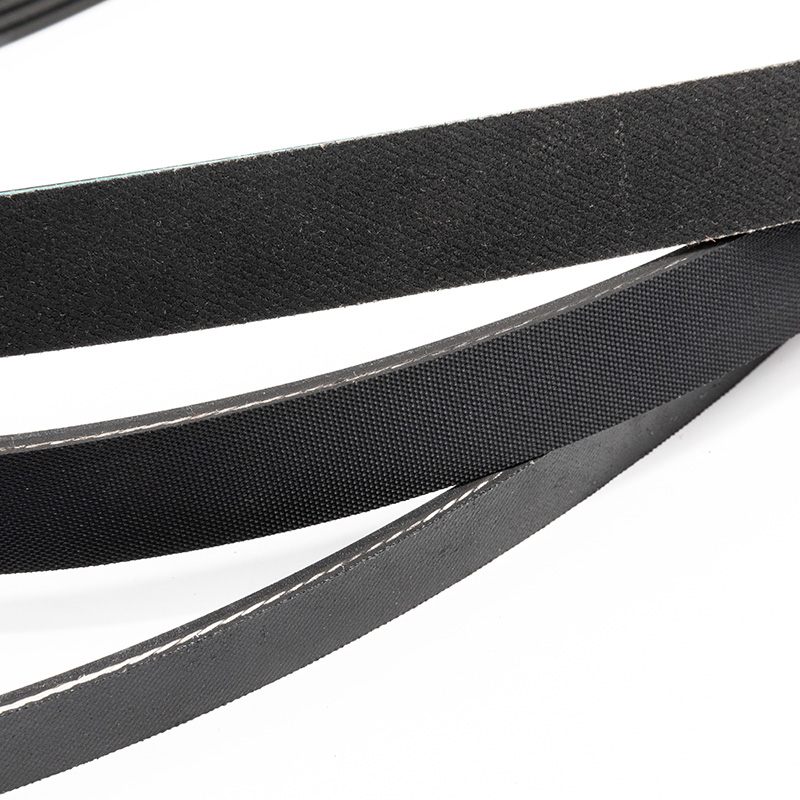Oil Resistance: EPDM (Ethylene Propylene Diene Monomer) rubber is renowned for its exceptional resistance to various types of oils, including engine oils, transmission fluids, and hydraulic fluids. This resilience is attributed to EPDM's unique molecular structure, which includes ethylene and propylene copolymers. These compounds provide a robust barrier against the penetration of oils, preventing the belt from swelling, softening, or losing its tensile strength. Consequently, EPDM V-ribbed belts maintain their original dimensions and mechanical properties even after prolonged exposure to oil, ensuring consistent and reliable performance. This resistance minimizes the risk of belt slippage and operational inefficiencies, which are common issues in belts made from less resilient materials.
Coolant Resistance: Automotive coolants, which typically contain ethylene glycol or propylene glycol, can be highly corrosive and damaging to rubber components. EPDM rubber is specifically engineered to withstand these harsh chemical environments. The material’s chemical resistance is due to its ability to resist the breakdown of its polymer chains when exposed to glycol-based coolants. This property prevents the belt from becoming brittle or cracked, thus preserving its flexibility and functionality. As a result, EPDM rubber belts do not degrade when exposed to coolant leaks or spills, maintaining their integrity and operational efficiency over time.
Chemical Stability: The inherent chemical stability of EPDM rubber is crucial for its performance in automotive applications. This stability means that EPDM belts are less susceptible to oxidative degradation, ozone exposure, and environmental stress cracking. EPDM rubber’s resistance to oxidation ensures that the belt remains intact and performs optimally despite long-term exposure to harsh conditions. EPDM’s ability to resist ozone and UV radiation helps prevent surface cracking and aging, which can lead to belt failure. This long-term chemical stability ensures that the belt’s physical properties, including its tensile strength and elasticity, remain consistent throughout its service life.
Maintained Flexibility: Flexibility is a key characteristic of V-ribbed belts, as it allows the belt to conform to the pulley system's contours and transmit power efficiently. EPDM rubber maintains its flexibility and elasticity even when exposed to automotive fluids. This ability to retain flexibility is due to EPDM’s resistance to hardening and brittleness, which can result from chemical exposure in other rubber types. The continued flexibility of EPDM belts ensures smooth operation and minimizes the risk of belt failure, noise, and vibration, which can occur when the belt becomes stiff or loses its pliability.
Long-Term Performance: The combined attributes of oil and coolant resistance, chemical stability, and maintained flexibility contribute to the overall longevity and reliability of EPDM rubber V-ribbed belts. The belts are designed to perform efficiently under the challenging conditions of automotive environments, where exposure to oils, coolants, and varying temperatures is inevitable. By resisting degradation from these fluids, EPDM rubber belts offer extended service life, reducing the frequency of replacements and maintenance costs. Their durable performance ensures that the vehicle's power transmission system remains effective and reliable over time, enhancing overall vehicle performance and safety.
Epdm Rubber Automotive V-Ribbed Belts




 English
English 中文简体
中文简体

 View More >>
View More >> View More >>
View More >> View More >>
View More >> View More >>
View More >> View More >>
View More >> View More >>
View More >> View More >>
View More >> View More >>
View More >> View More >>
View More >> View More >>
View More >> View More >>
View More >> View More >>
View More >>
